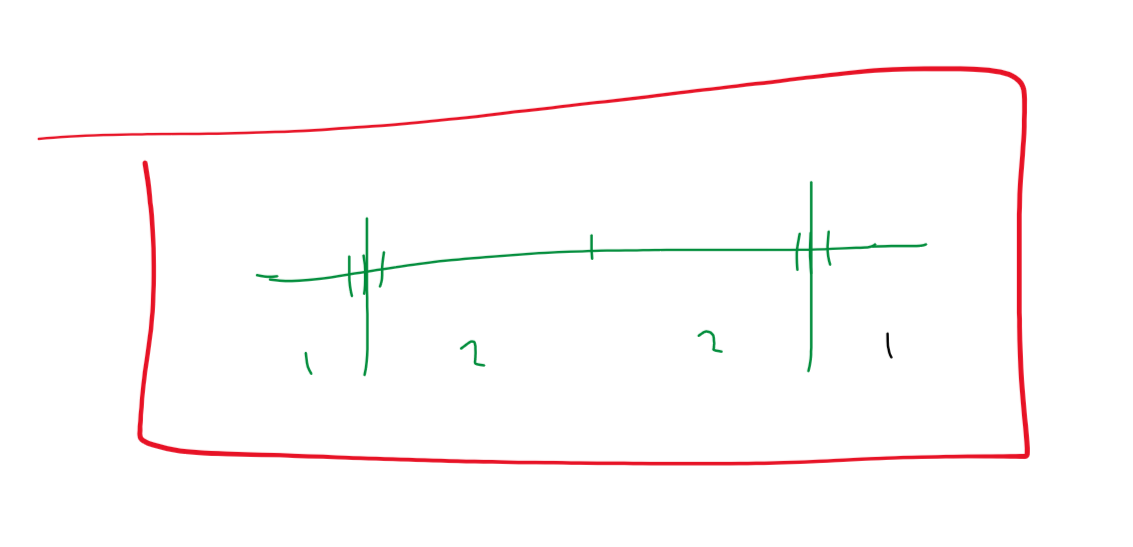Ch11 Market Power, Collusion, and Oligopoly¶
Merger¶
horizontal integration¶
before merger: competitive (to where D=MC)
after merger: MC drops
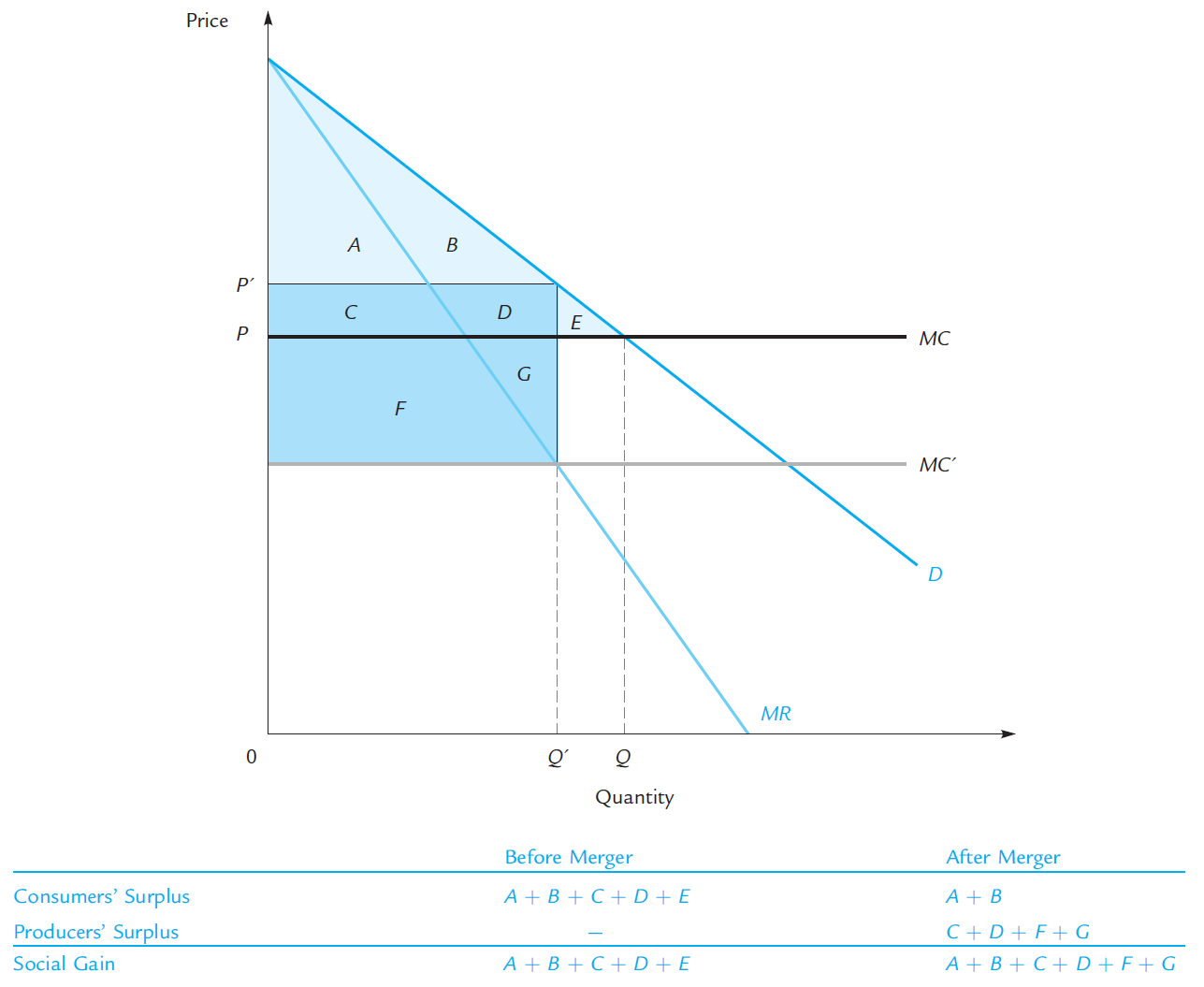 don't necessarily gain
don't necessarily gain
if MC' << MC
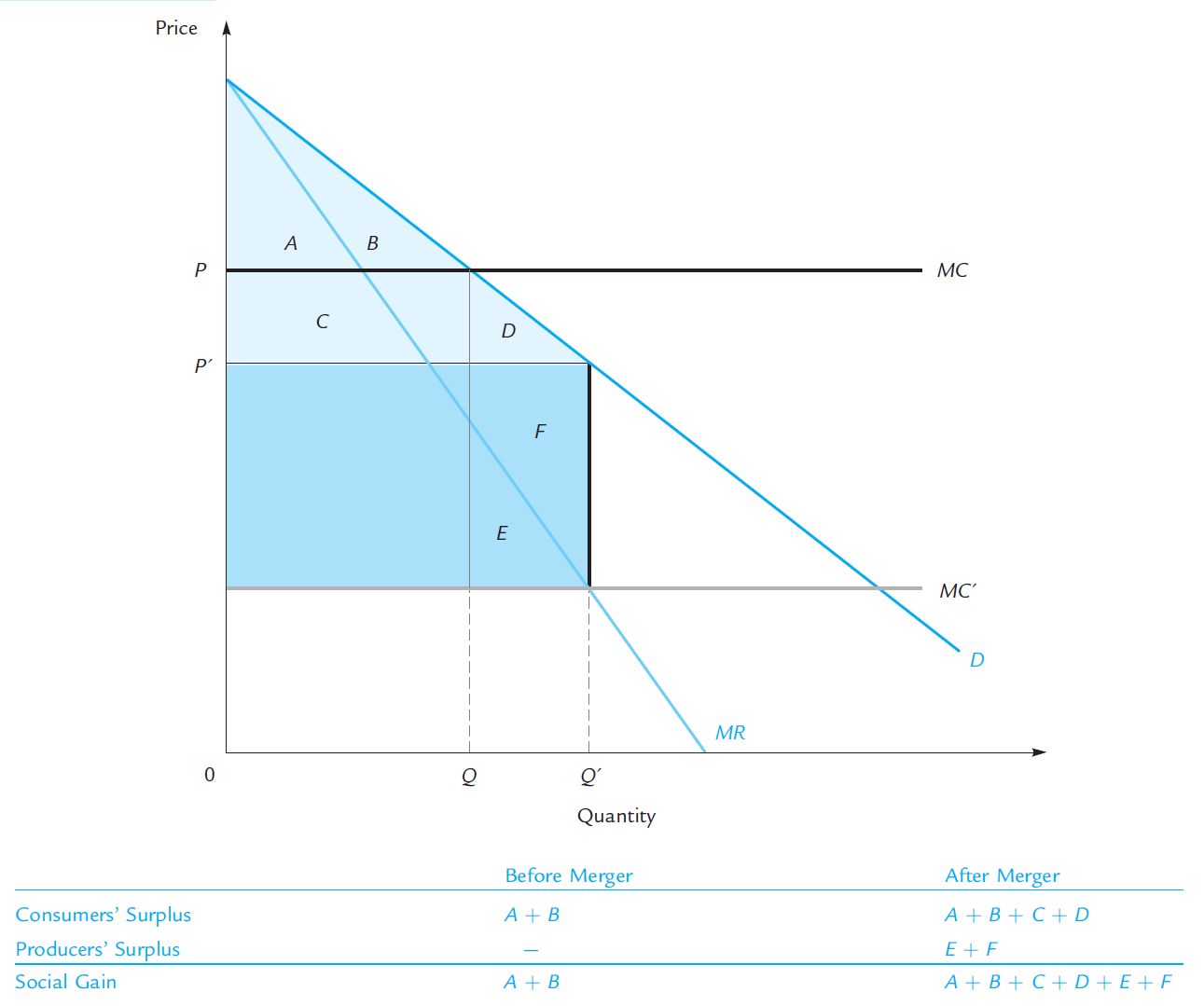
P' lower than before merger
and both consumers & producer gain
if MC' = MC
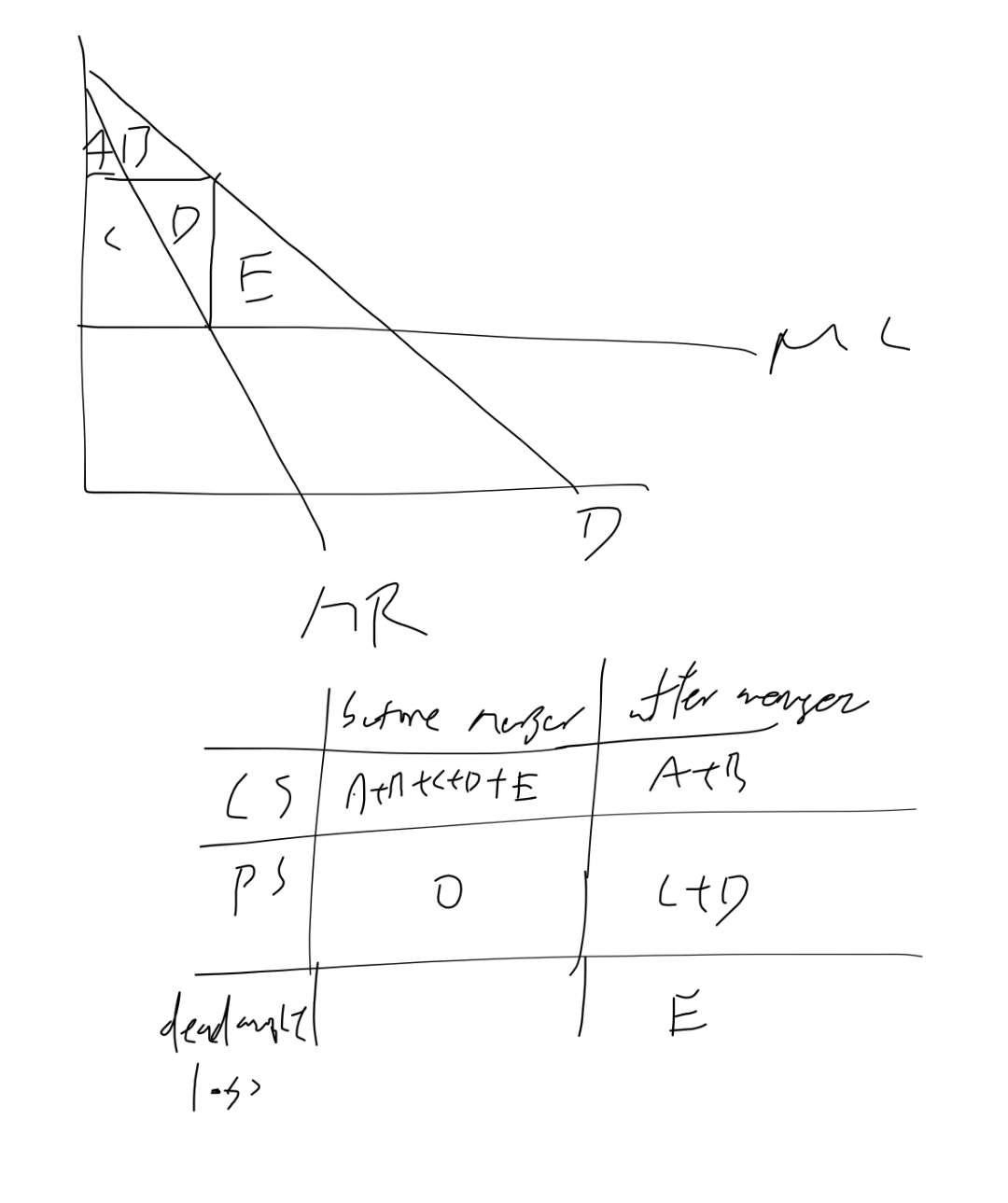 deadweight loss
deadweight loss
vertical integration¶
Say there's a upstream monopoly and downstream monopoly respectively. Upstream company would sell a monopoly price for downstream company, which is a part of the MC of downstream company. When they merge, Upstream would produces at MC = D, lowering the MC of downstream.
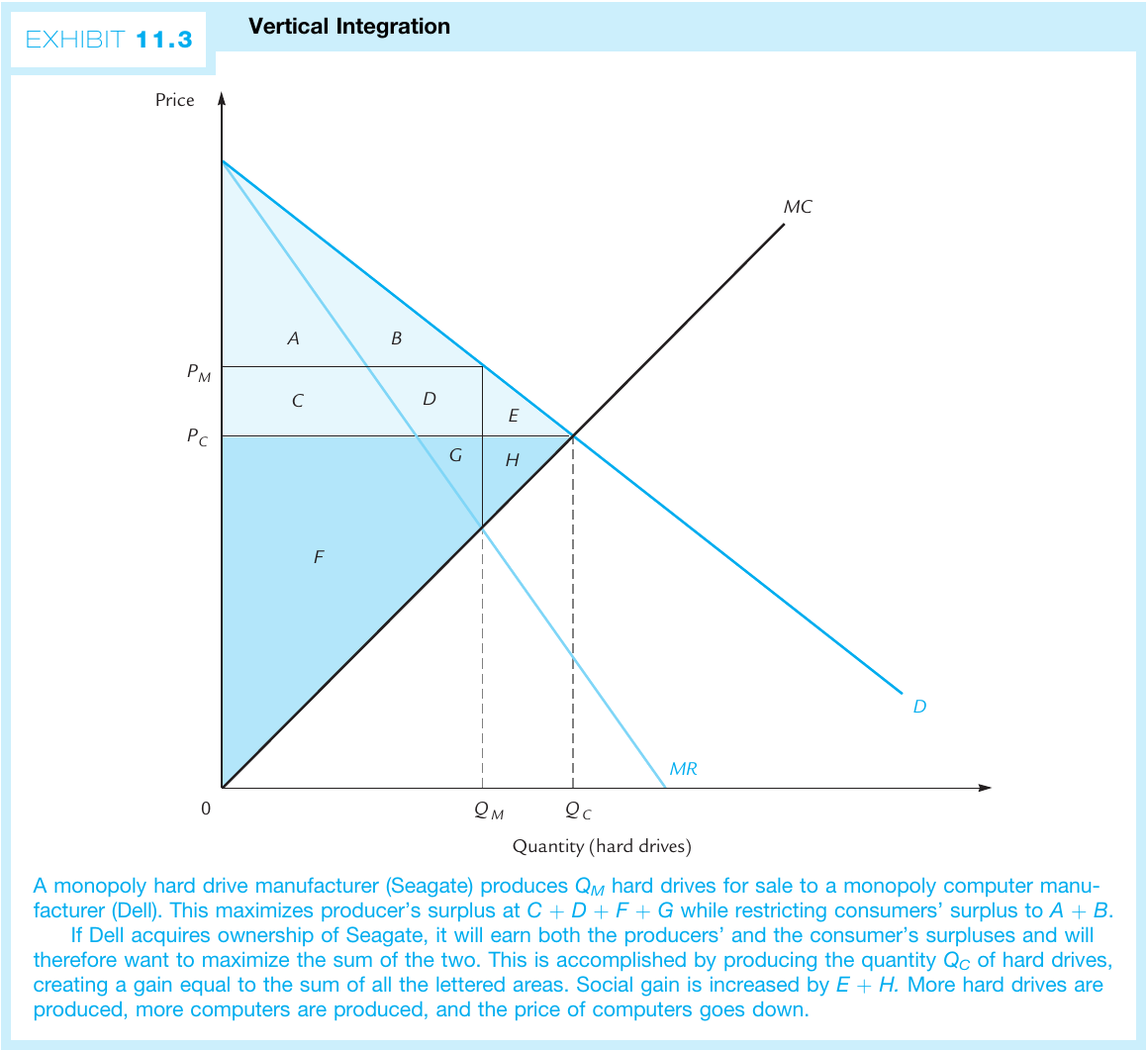
provide service¶
resale price
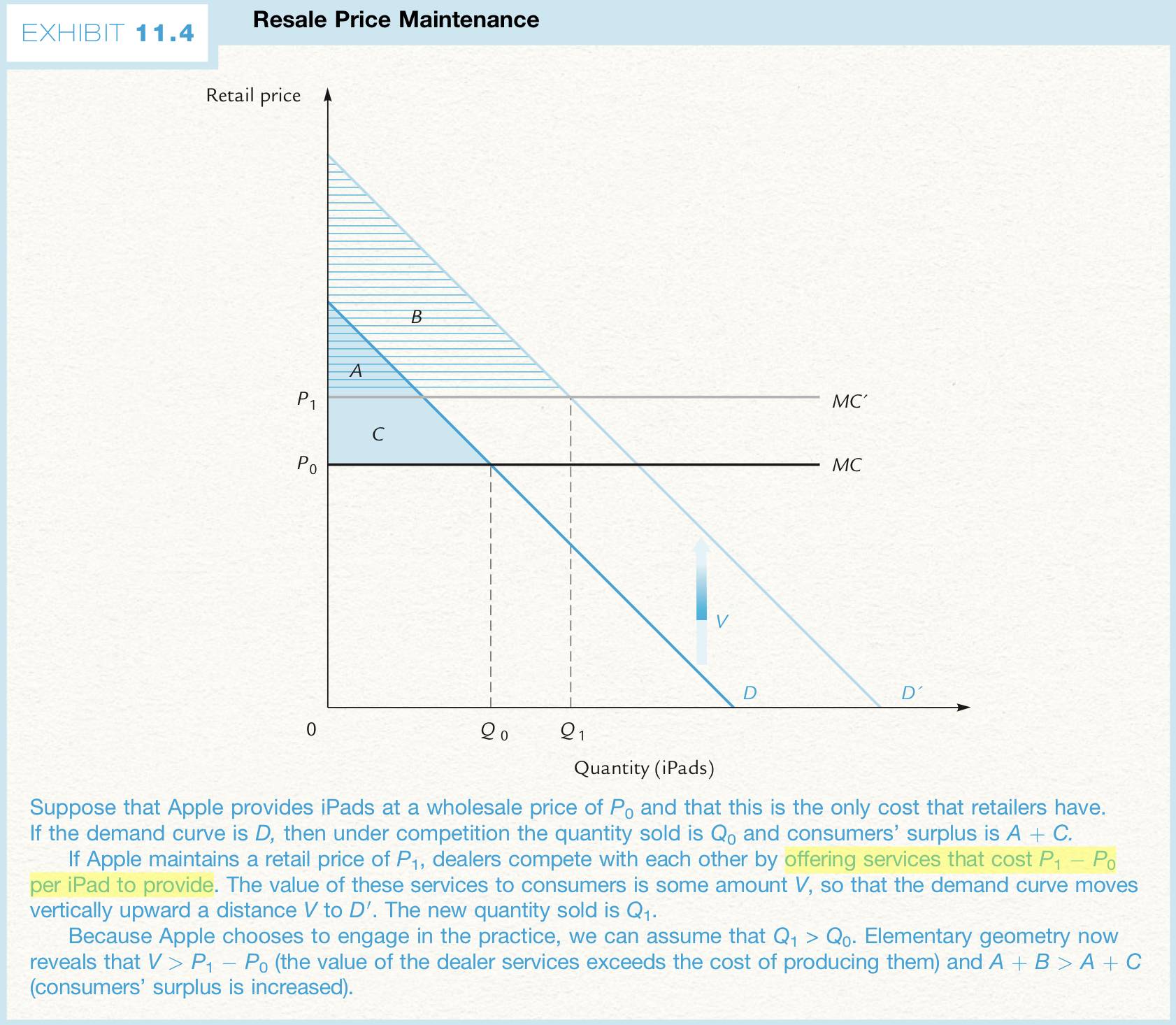
Oligopoly¶
cartel¶
A group of firms engaged in collusion
will fail due to prison dilemma, unless repeated
contestable market¶
firm can enter & exit costlessly
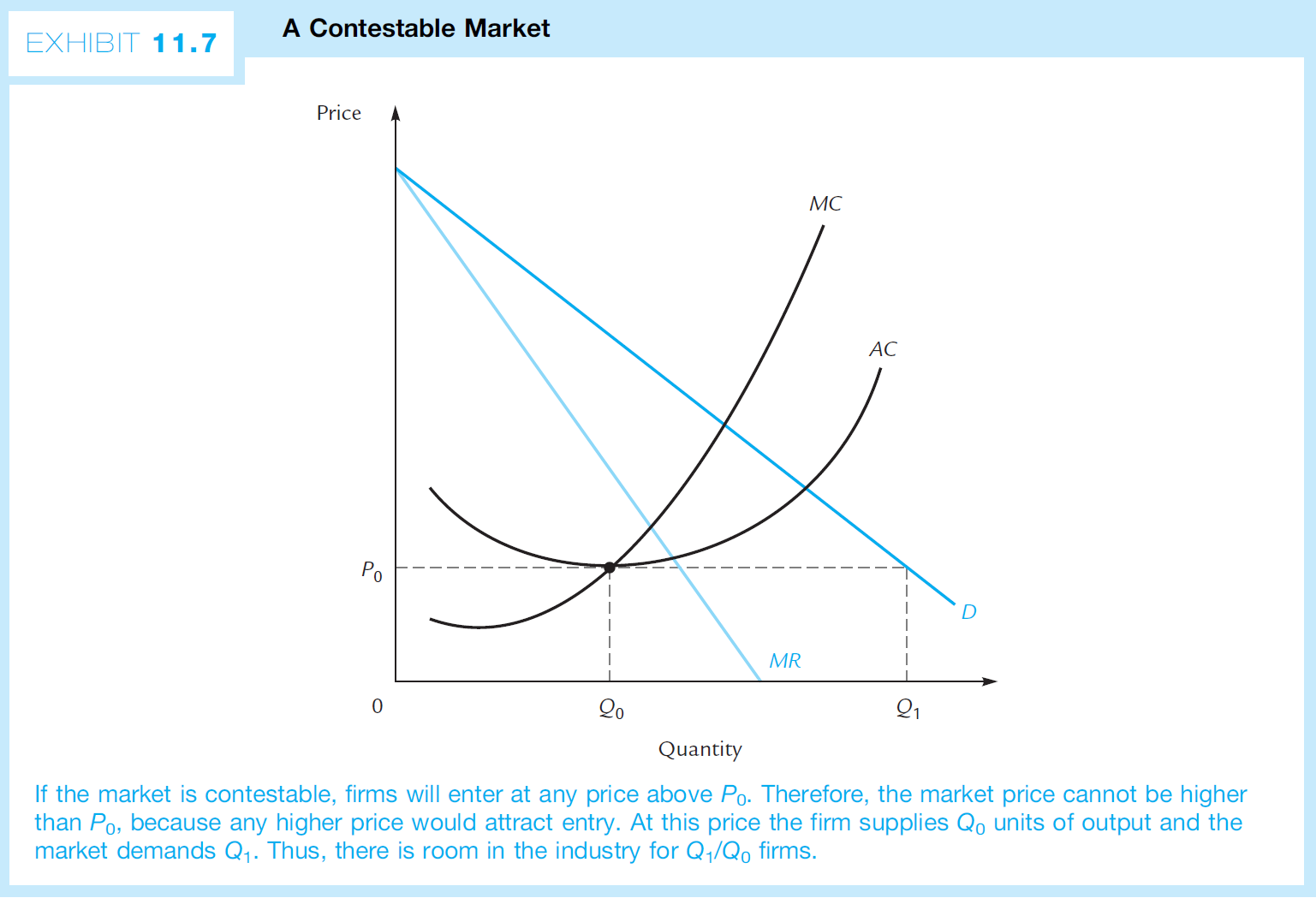 P=MC=AC
P=MC=AC
natural monopoly in a contestable market
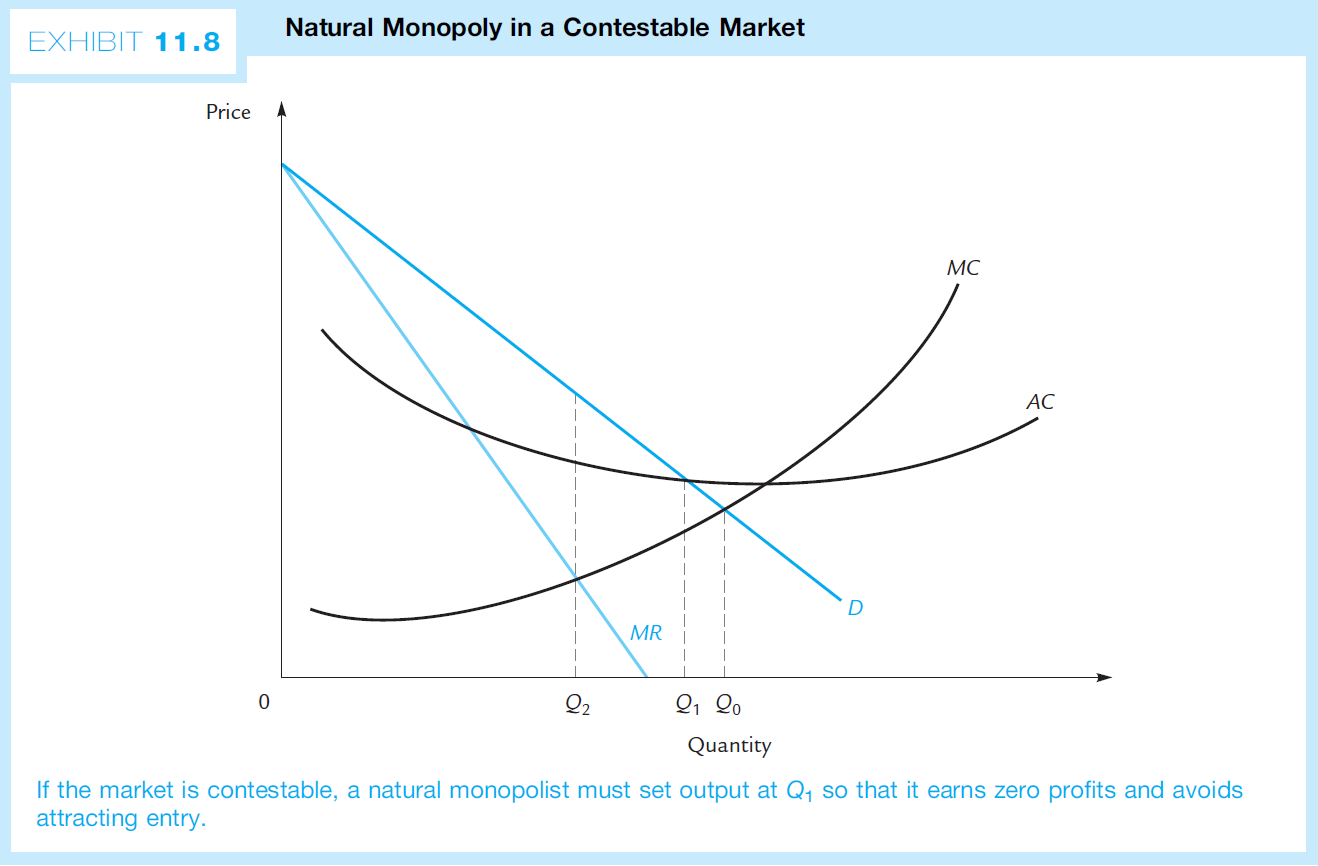
Cournot model¶
Cournot Model
==assumption: the rival has fixed quantity== i.e. take rivals' output as given
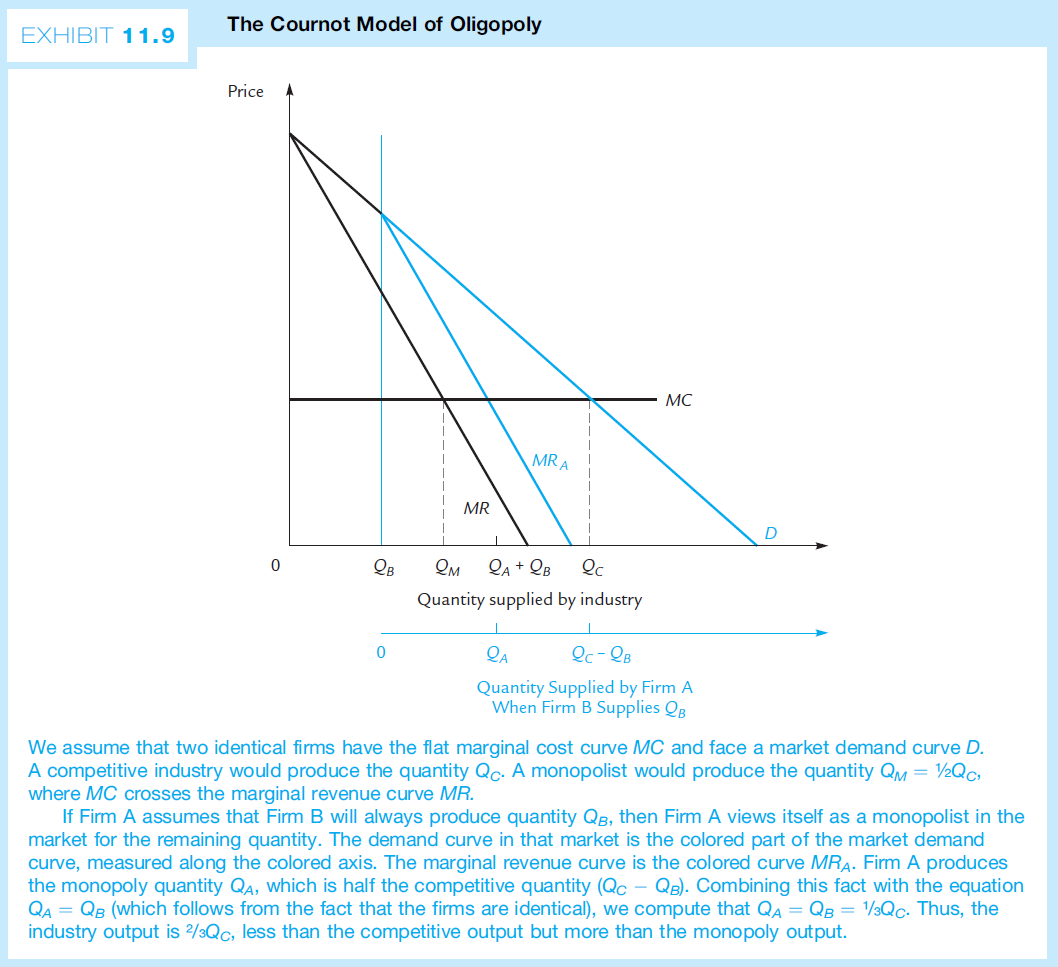
Bertrand model¶
==assumption: the rival has fixed price== i.e. take rivals' price as given, and assume the rival won't change it → will undercut its price as long as > MC s.t. it can capture the entire market → repeatedly undercut each's price → ==price = MC = competition price==
about Cournot & Bertrand model¶
if the assumptions fail, which is always the case, the models won't work
monopolistic competition¶
- monopolistic competition
- producing a product that differs sufficiently from the output of other producers that some consumers will have a distinct preference for it
- basically same products with different branding
- demand very elastic
- Q = where MR = MC
- short run : positive economic profits
- long run : zero economic profits
- TR = TC i.e. P = AC
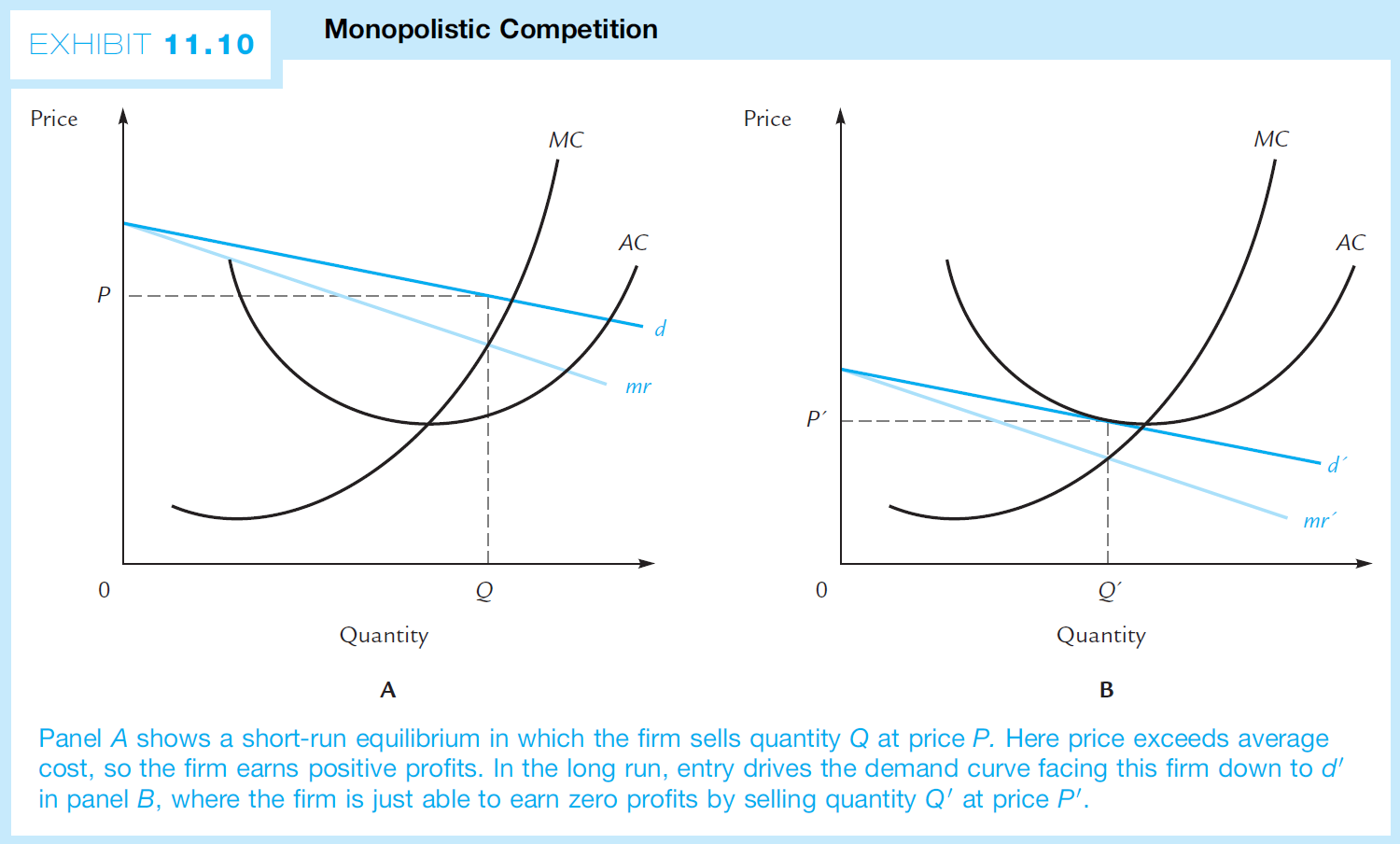
HW¶
N1¶
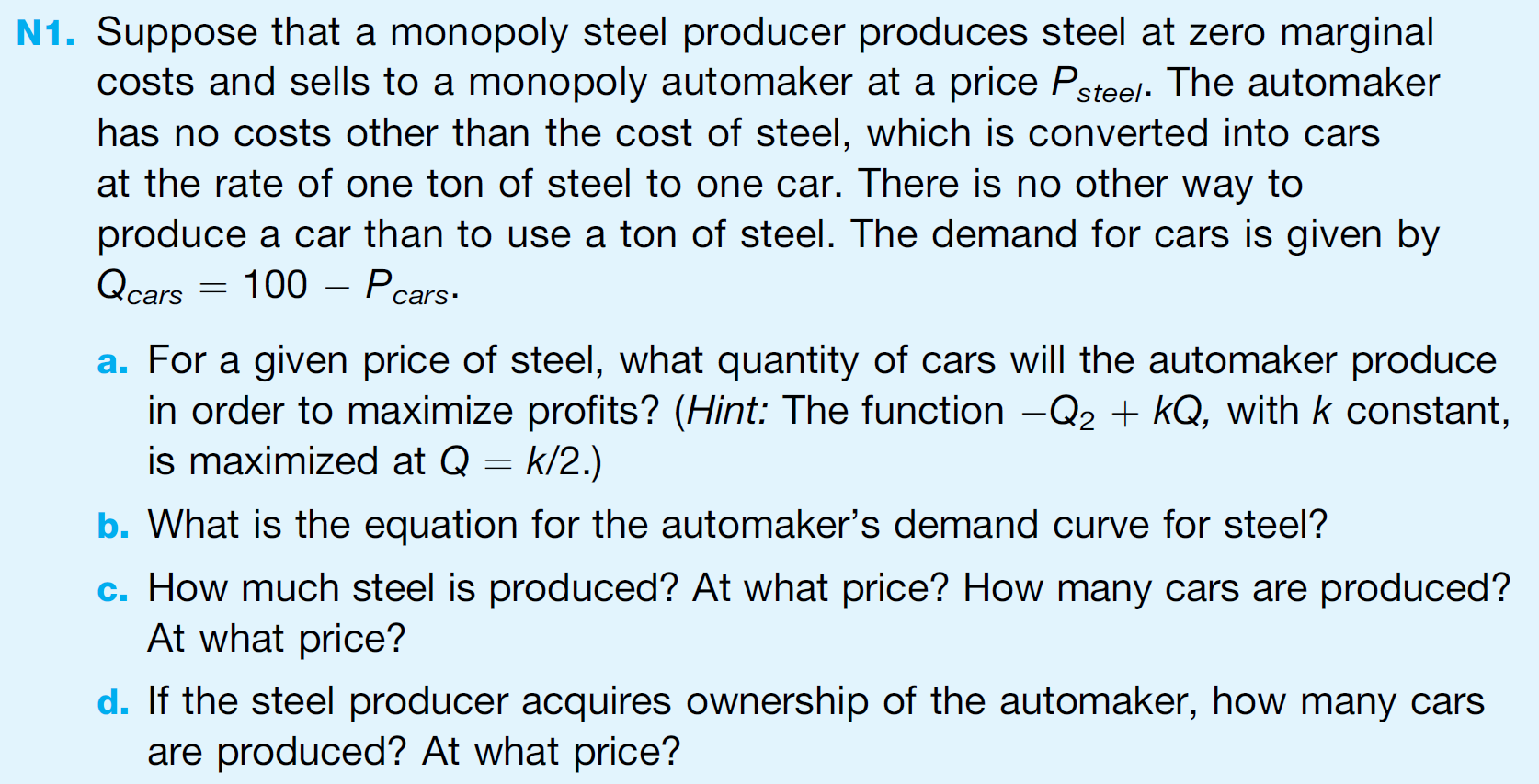
N2¶
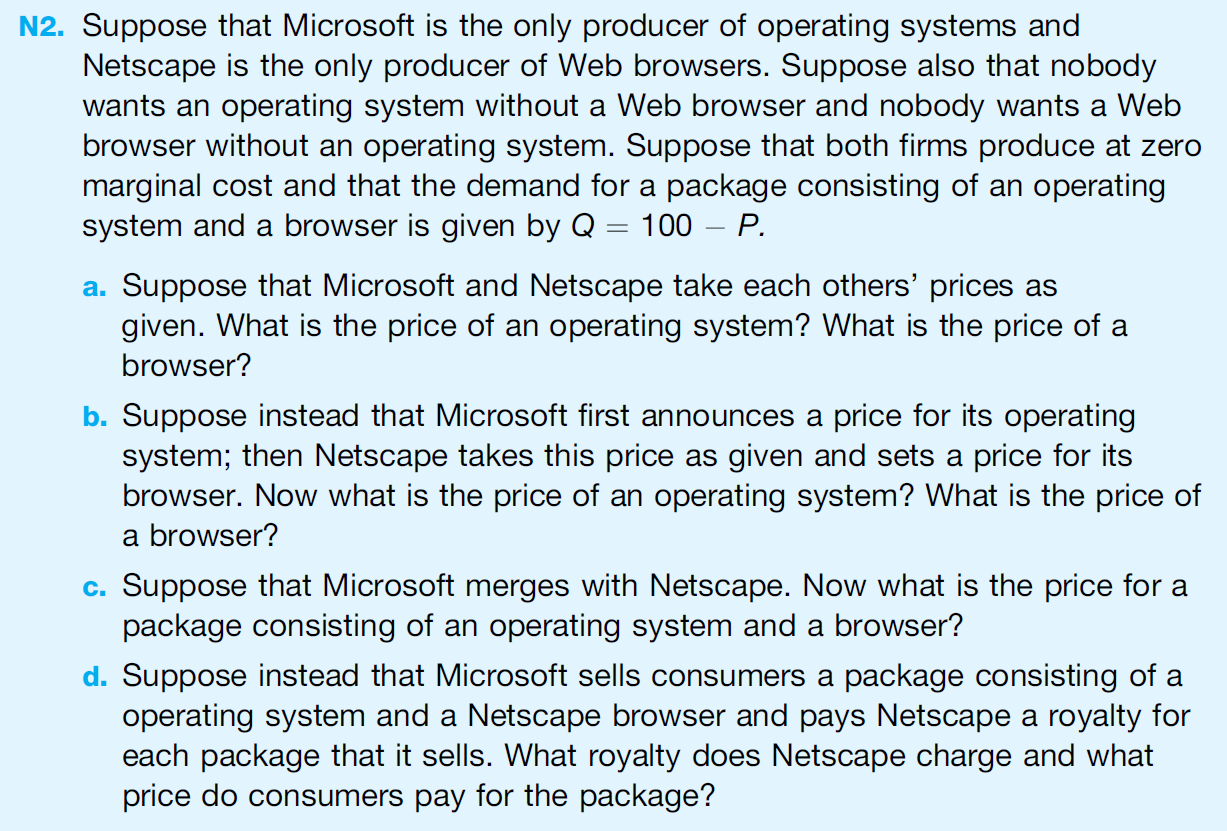 N2(b) N 先根據 \(P_M\) 定出 \(P_N\) 定出 Q,M 再根據 Q 定出 \(P_M\)
N2(b) N 先根據 \(P_M\) 定出 \(P_N\) 定出 Q,M 再根據 Q 定出 \(P_M\)
N3¶
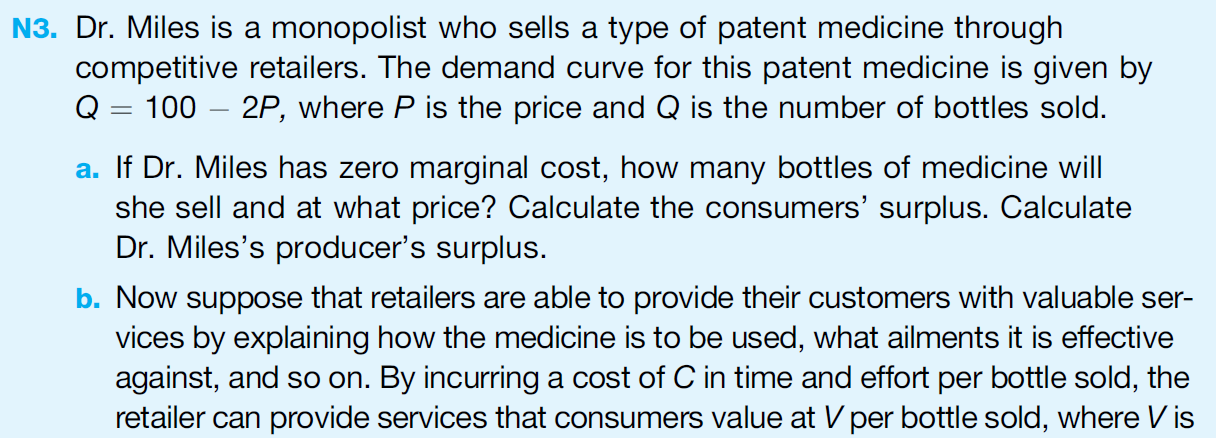
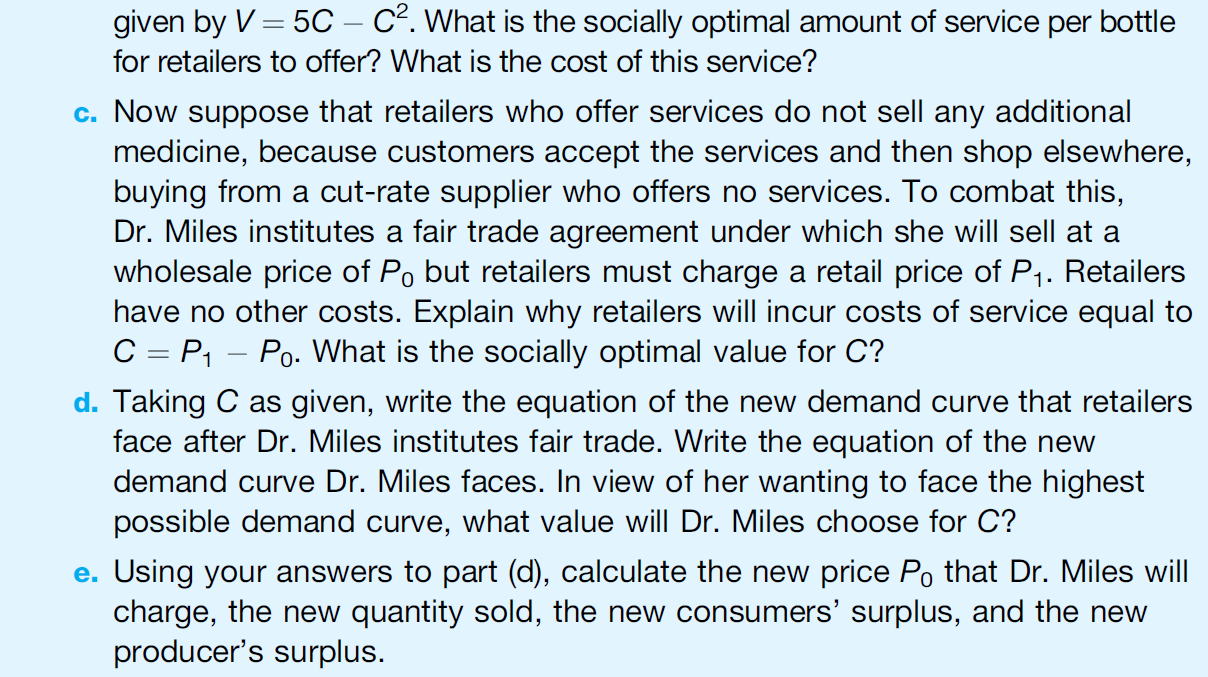
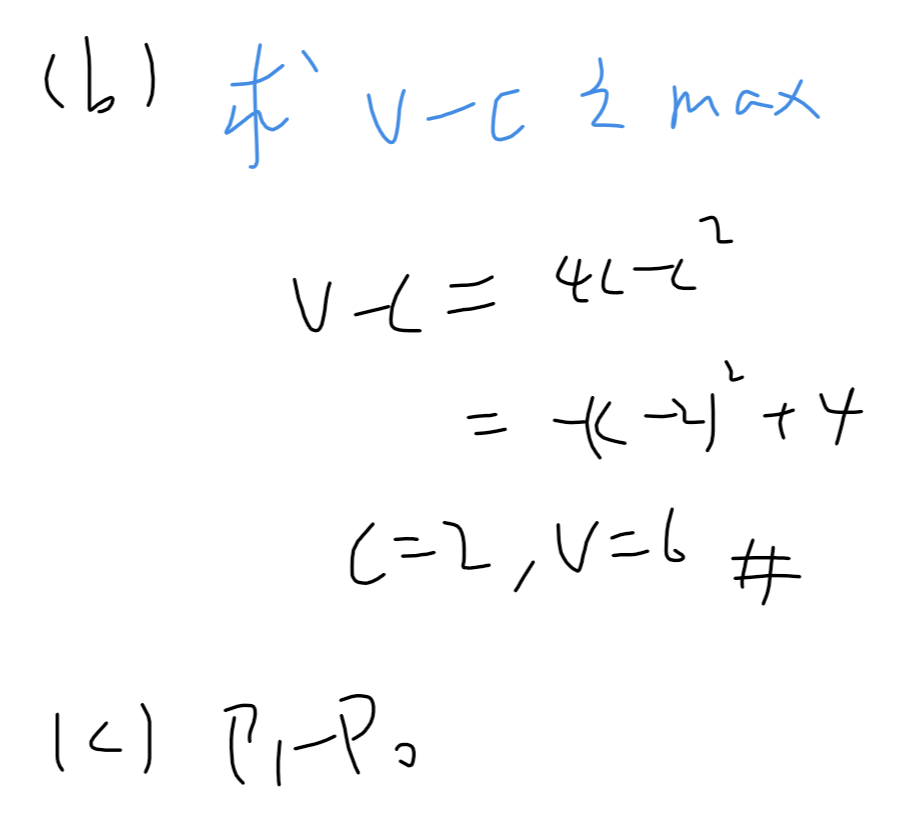
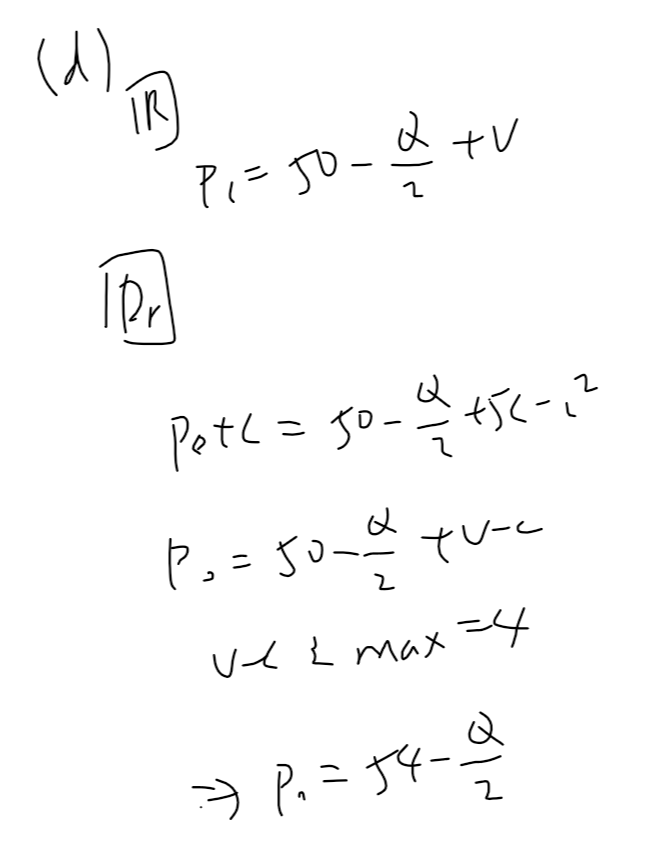
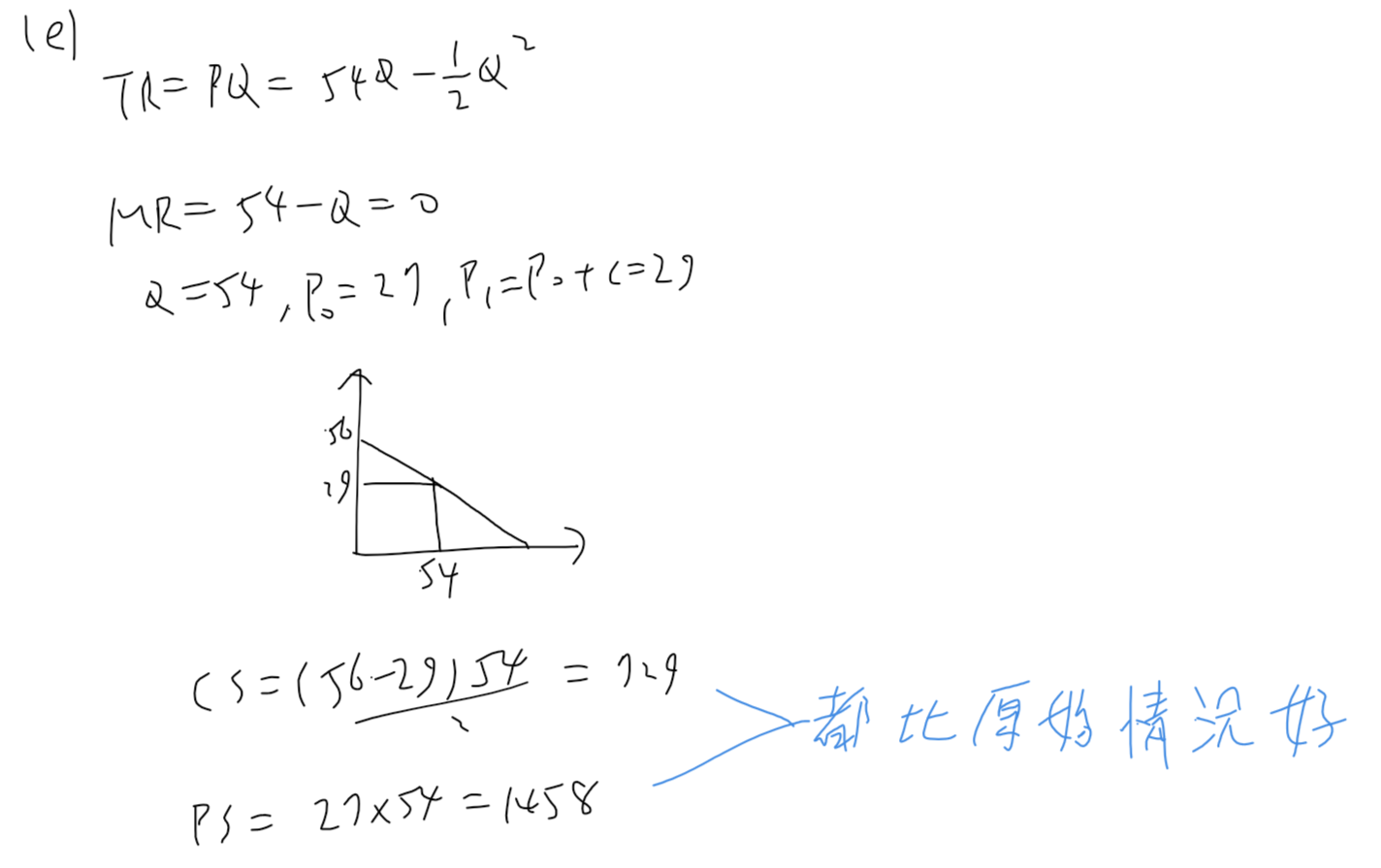
N4¶
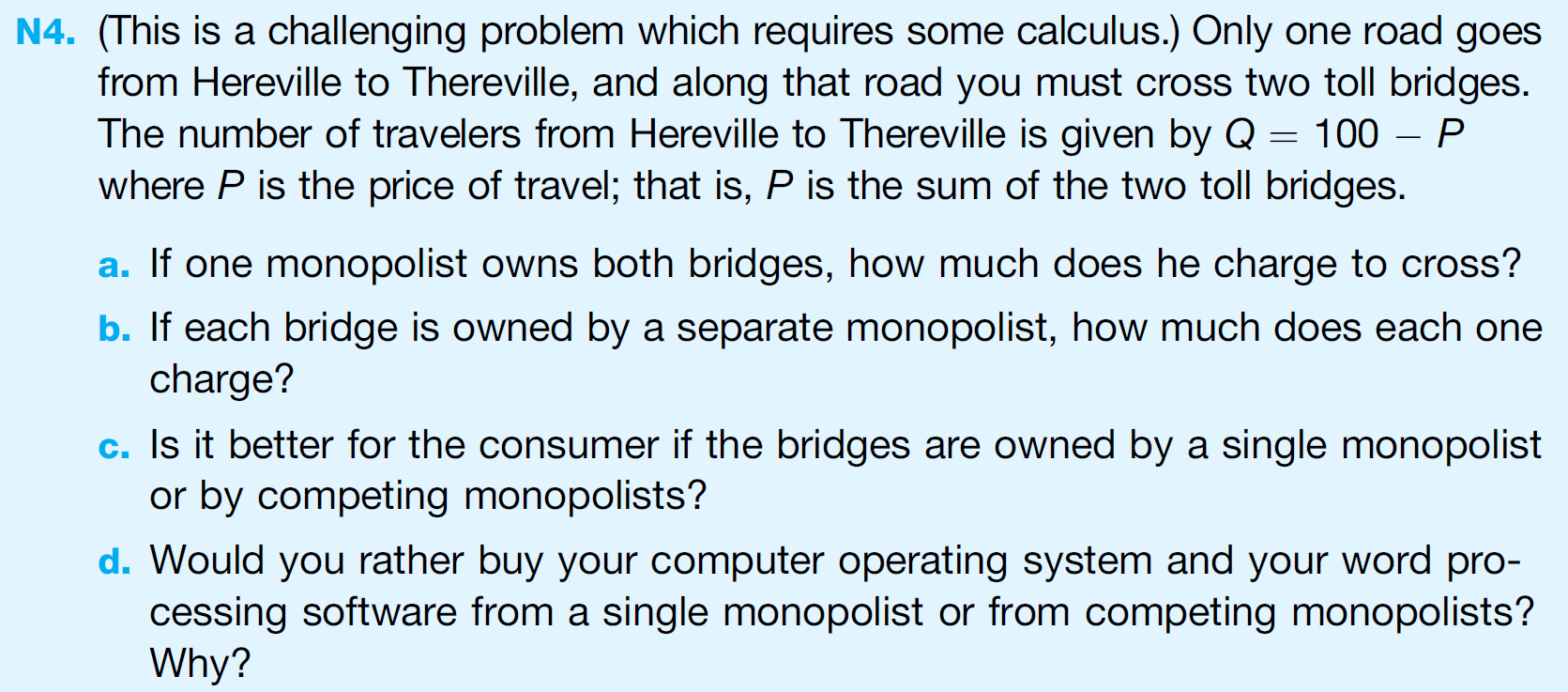 橋有先後
橋有先後
i.e. 2nd bridge take 1st as given in (b)
thus idendical with N2(b)
P15¶

P18 (Solve cases of 4 and 5 vendors)¶
 http://gametheory101.com/tag/hotellings-game/
five vendors:
http://gametheory101.com/tag/hotellings-game/
five vendors:
